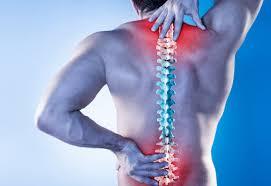Muscle soreness is a common issue faced by many individuals, whether they are seasoned athletes or occasional gym-goers. The discomfort and pain associated with muscle soreness can hinder daily activities and impede progress in fitness goals. However, effective treatments exist to alleviate and reduce muscle soreness, enabling individuals to recover faster and continue pursuing their fitness endeavors with vigor. In this comprehensive guide, we delve into various strategies and remedies that have proven to be effective in combating muscle soreness.
Pain o soma 350mg its strong muscle relaxant qualities, quickly relieves pain and regains flexibility so you may resume living life to the fullest. Say goodbye to discomfort caused by tense muscles and welcome the solace and alleviation that Pain O Soma 350mg provides.
Understanding Muscle Soreness
Before delving into treatments, it's essential to understand what causes muscle soreness. Muscle soreness, also known as delayed onset muscle soreness (DOMS), typically occurs after engaging in strenuous physical activity or performing exercises that your body is not accustomed to. It manifests as pain, stiffness, and tenderness in the muscles, often peaking 24 to 72 hours after exercise. DOMS is believed to result from microscopic damage to muscle fibers and the subsequent inflammatory response by the body.
Hydration and Nutrition
Proper hydration and nutrition play pivotal roles in reducing muscle soreness and expediting recovery. Staying adequately hydrated ensures optimal muscle function and helps flush out toxins that contribute to soreness. Consuming a balanced diet rich in protein, carbohydrates, and healthy fats provides the necessary nutrients for muscle repair and growth. Additionally, incorporating anti-inflammatory foods such as turmeric, ginger, and omega-3 fatty acids can help alleviate soreness and inflammation.
Tapaday 200 is used to address moderate to severe pain from headaches, toothaches, period pain, and colds and flu. Tapaday 200 is used to treat acute pain. It reduces pain perception in the body by binding to certain receptors in the brain and spinal cord.
Active Recovery Techniques
Active recovery involves engaging in low-intensity exercises or activities to promote blood flow and facilitate muscle recovery. Light cardio, yoga, and stretching are effective active recovery techniques that can help alleviate muscle soreness. These activities increase circulation, which delivers oxygen and nutrients to fatigued muscles while removing metabolic waste products, thereby accelerating the healing process.
Massage Therapy
Massage therapy is a time-honored practice known for its ability to relieve muscle tension and soreness. Various massage techniques, such as deep tissue massage, myofascial release, and trigger point therapy, target different layers of muscle tissue to alleviate tightness and promote relaxation. Massage not only improves blood circulation but also stimulates the release of endorphins, which are natural pain relievers.
Cold Therapy
Cold therapy, also known as cryotherapy, is a popular treatment for reducing muscle soreness and inflammation. Applying ice packs or taking cold baths/showers constricts blood vessels and reduces blood flow to the affected muscles, thereby decreasing swelling and numbing the area to alleviate pain. Cold therapy is particularly effective when applied immediately after intense exercise or injury.
Heat Therapy
Contrary to cold therapy, heat therapy involves applying heat packs, heating pads, or warm baths/showers to sore muscles. Heat helps increase blood flow, relaxes tense muscles, and promotes flexibility, making it an effective treatment for alleviating muscle soreness. Heat therapy is best utilized for chronic muscle pain or stiffness, as it helps soothe and loosen tight muscles.
Epsom Salt Baths
Epsom salt, composed of magnesium sulfate, is renowned for its therapeutic properties in relieving muscle soreness and promoting relaxation. Adding Epsom salt to a warm bath facilitates the absorption of magnesium through the skin, which helps reduce inflammation and muscle cramps. Additionally, the warmth of the bath provides soothing relief to tired muscles, making it an ideal recovery remedy after intense physical activity.
Adequate Rest and Sleep
Perhaps the most underrated yet crucial aspect of muscle recovery is adequate rest and sleep. During sleep, the body undergoes muscle repair and regeneration, synthesizing proteins and releasing growth hormones essential for tissue repair. Prioritizing quality sleep and allowing sufficient rest between workouts is essential for preventing and alleviating muscle soreness.
Conclusion
Effectively managing muscle soreness is essential for optimizing athletic performance and maintaining overall well-being. By incorporating hydration, nutrition, active recovery techniques, massage therapy, cold and heat therapy, Epsom salt baths, and adequate rest, individuals can mitigate the discomfort associated with muscle soreness and expedite the recovery process. Remember to listen to your body and adjust your recovery strategies accordingly to ensure long-term health and fitness success.

